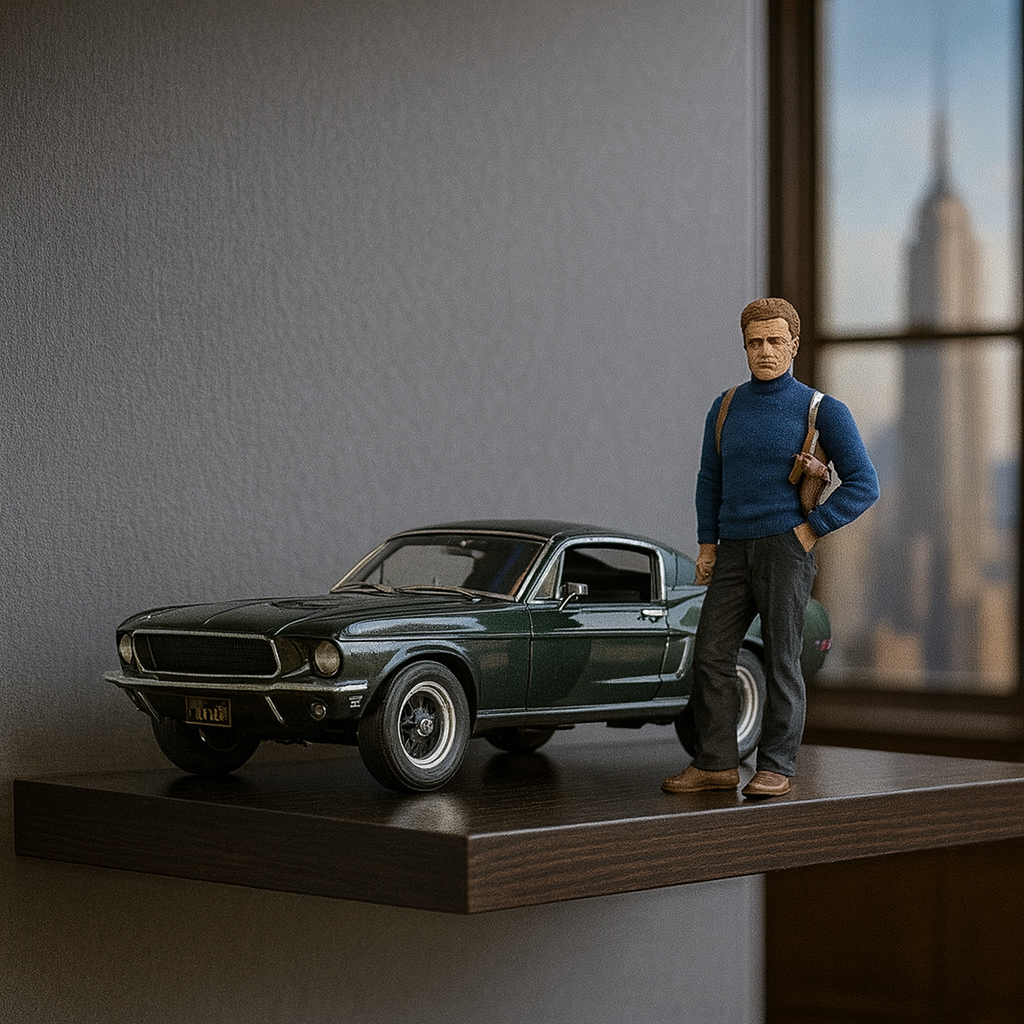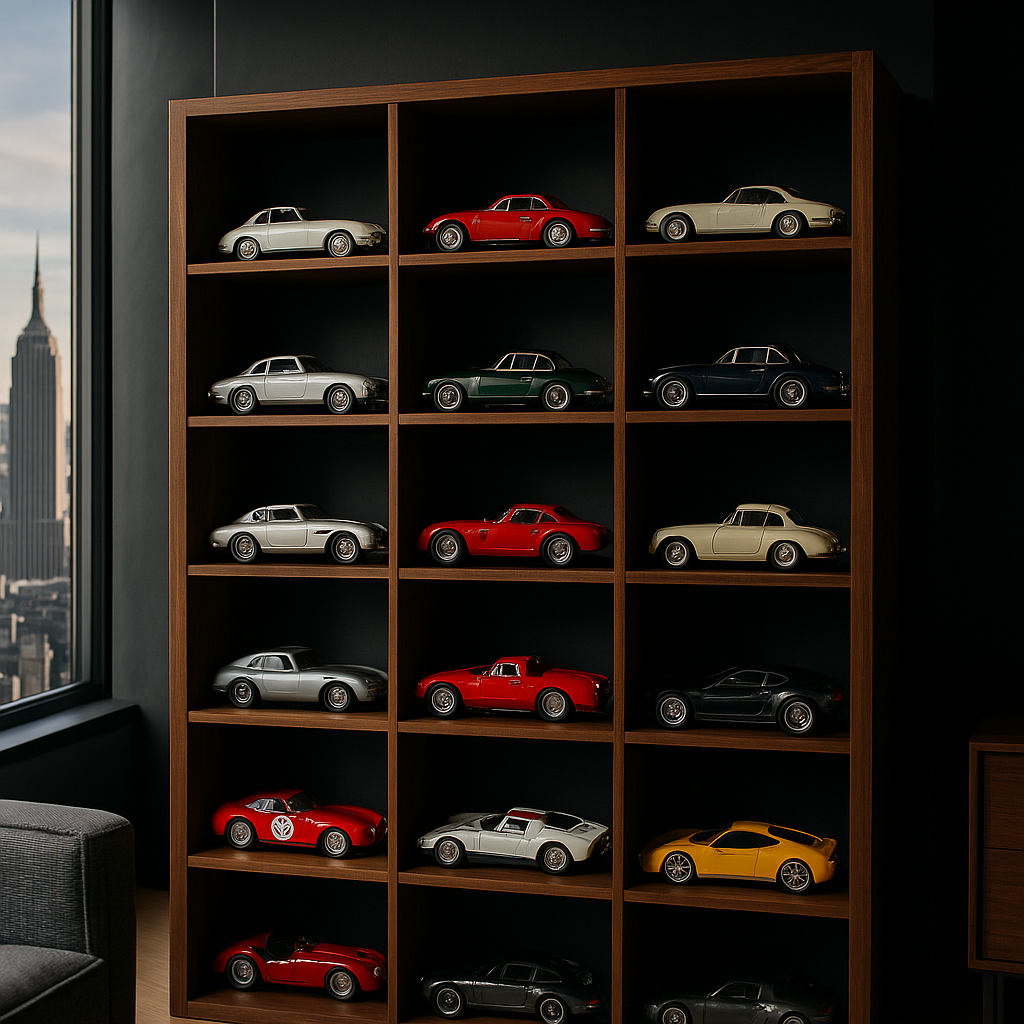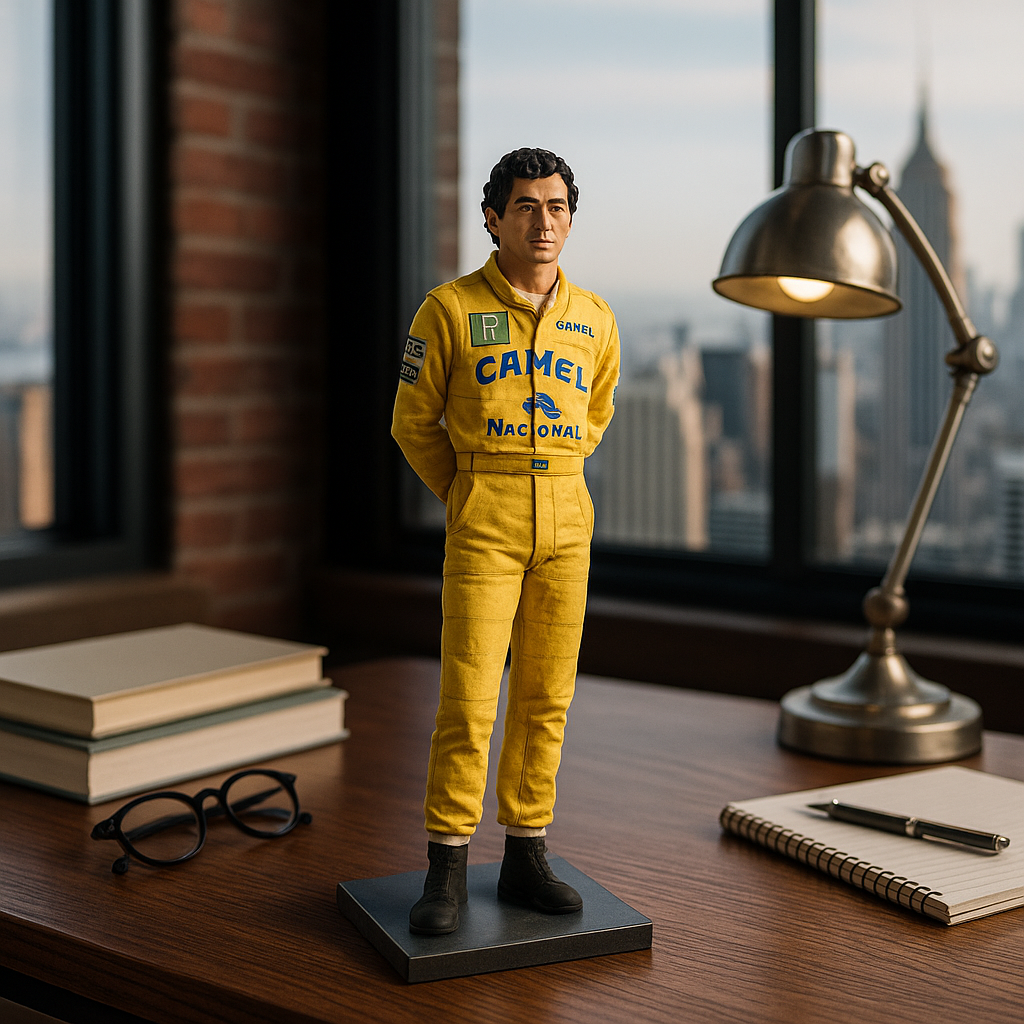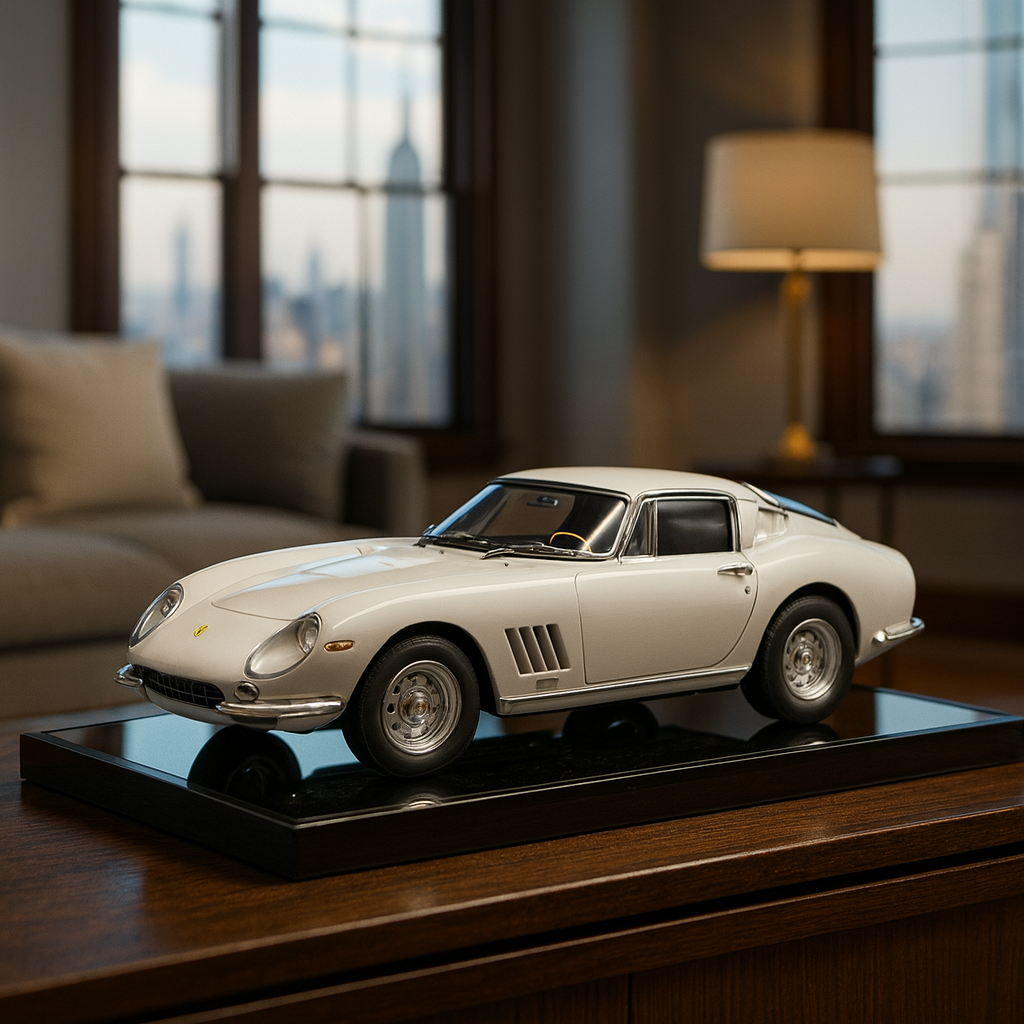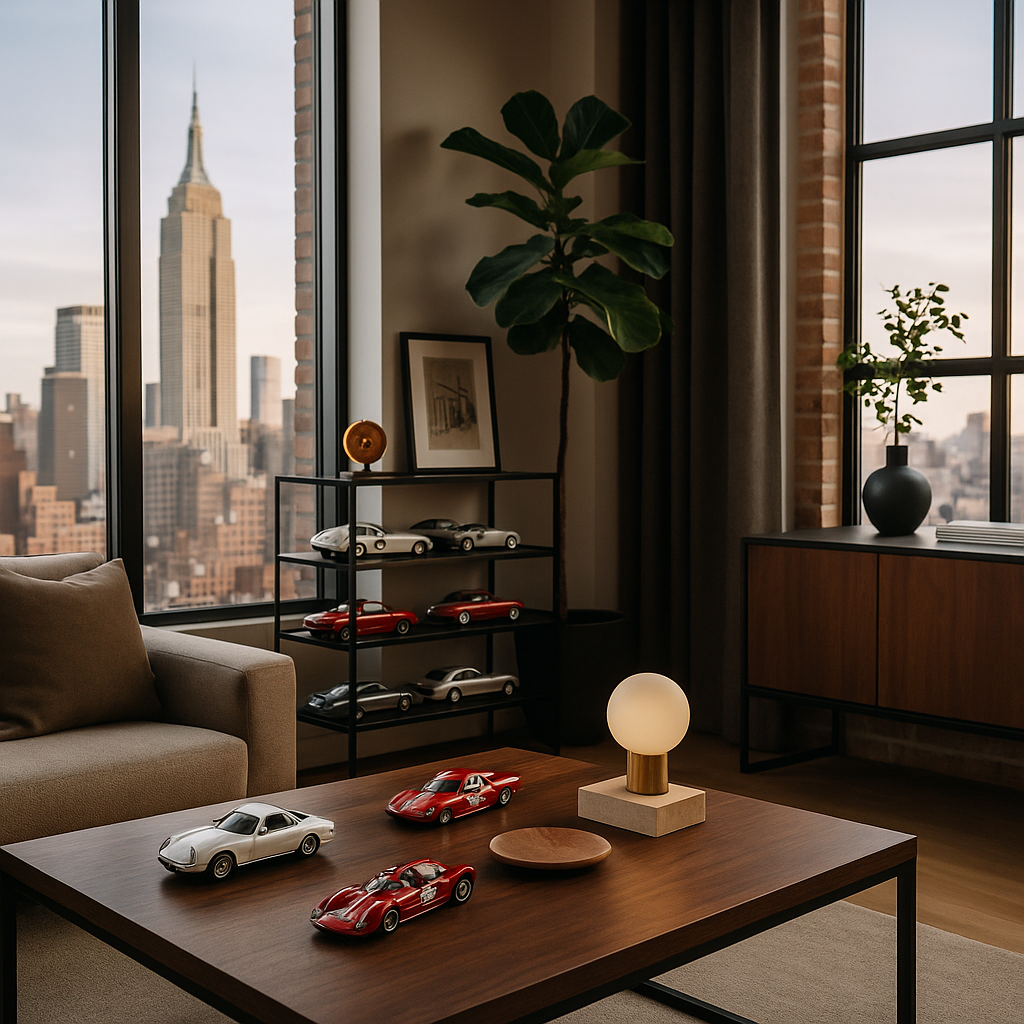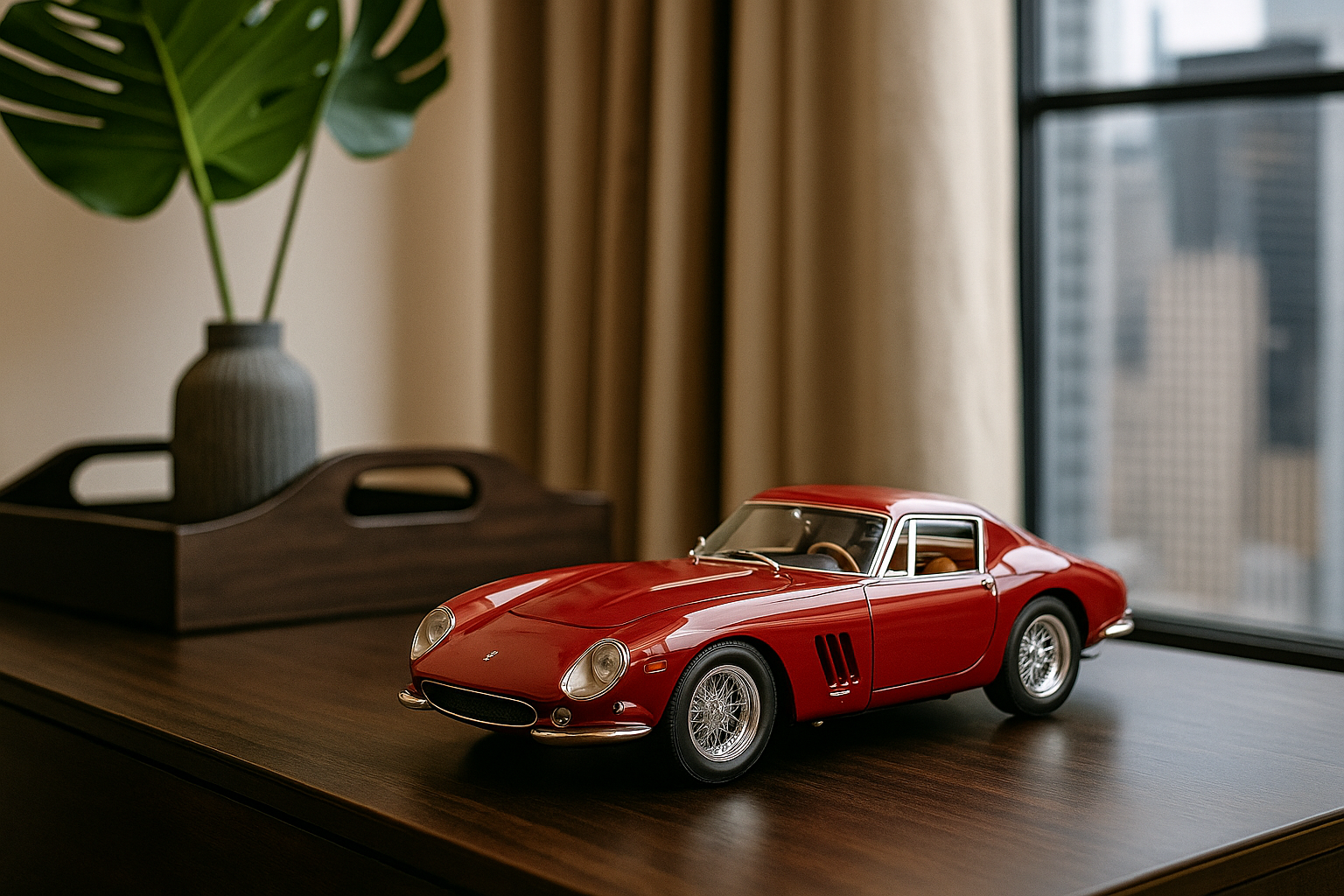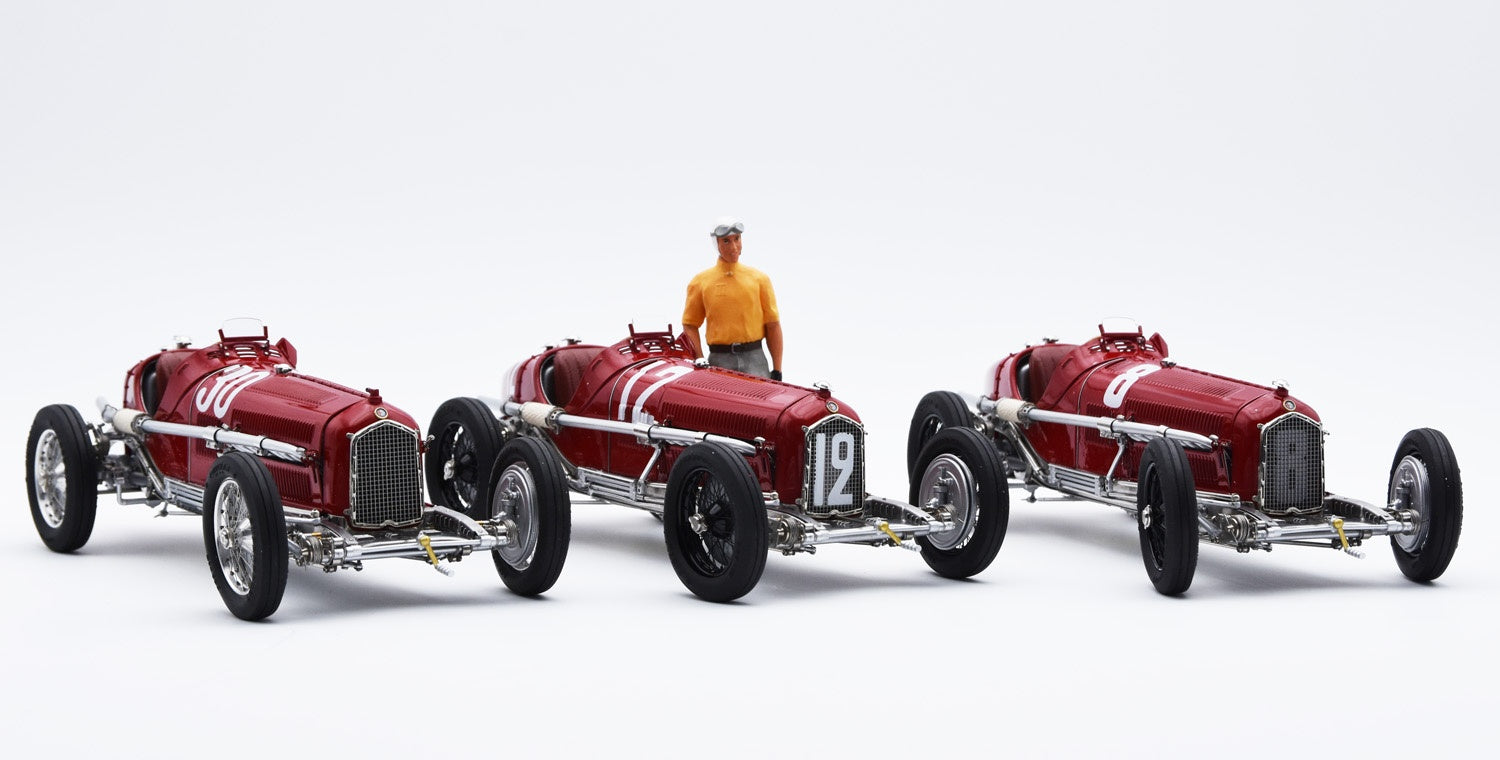

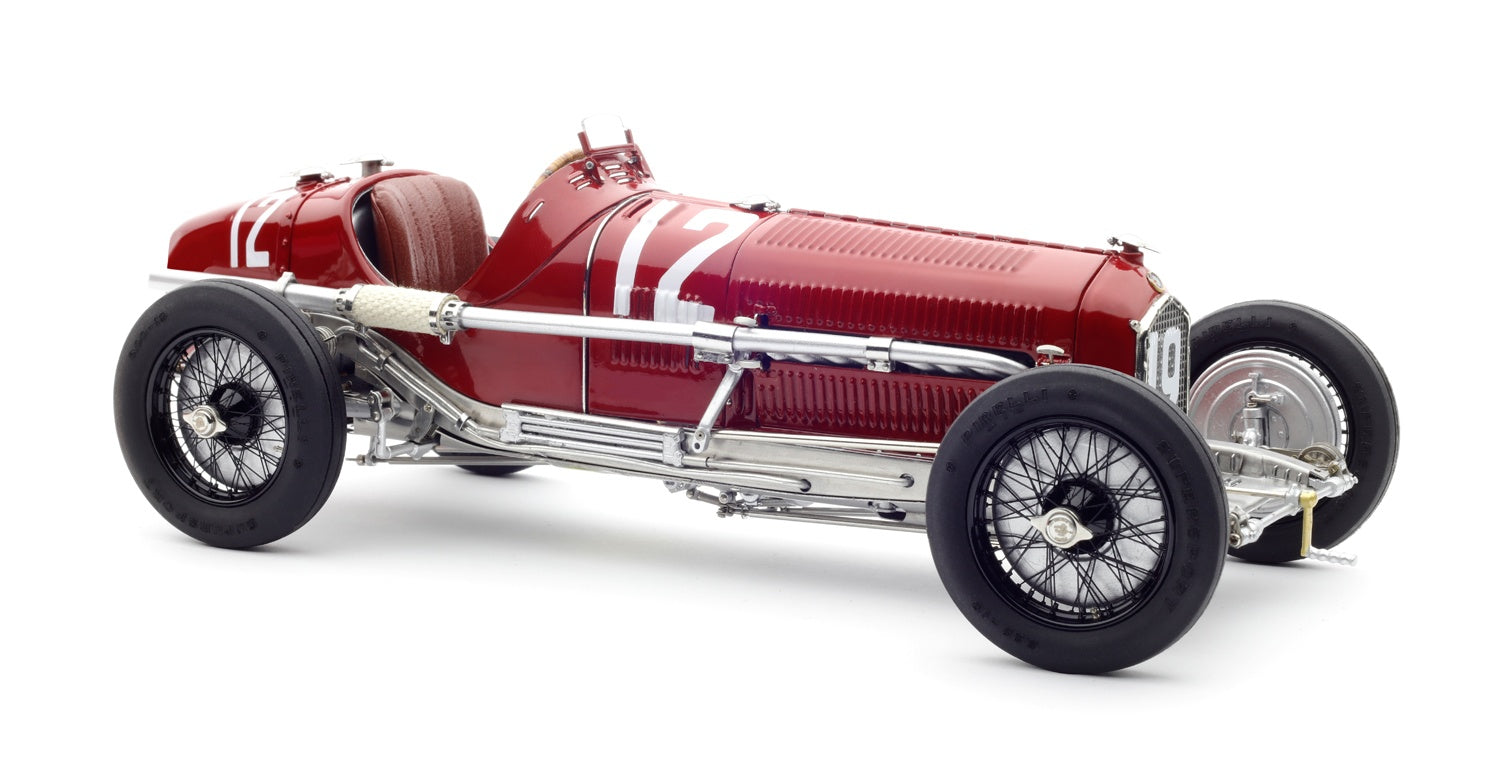
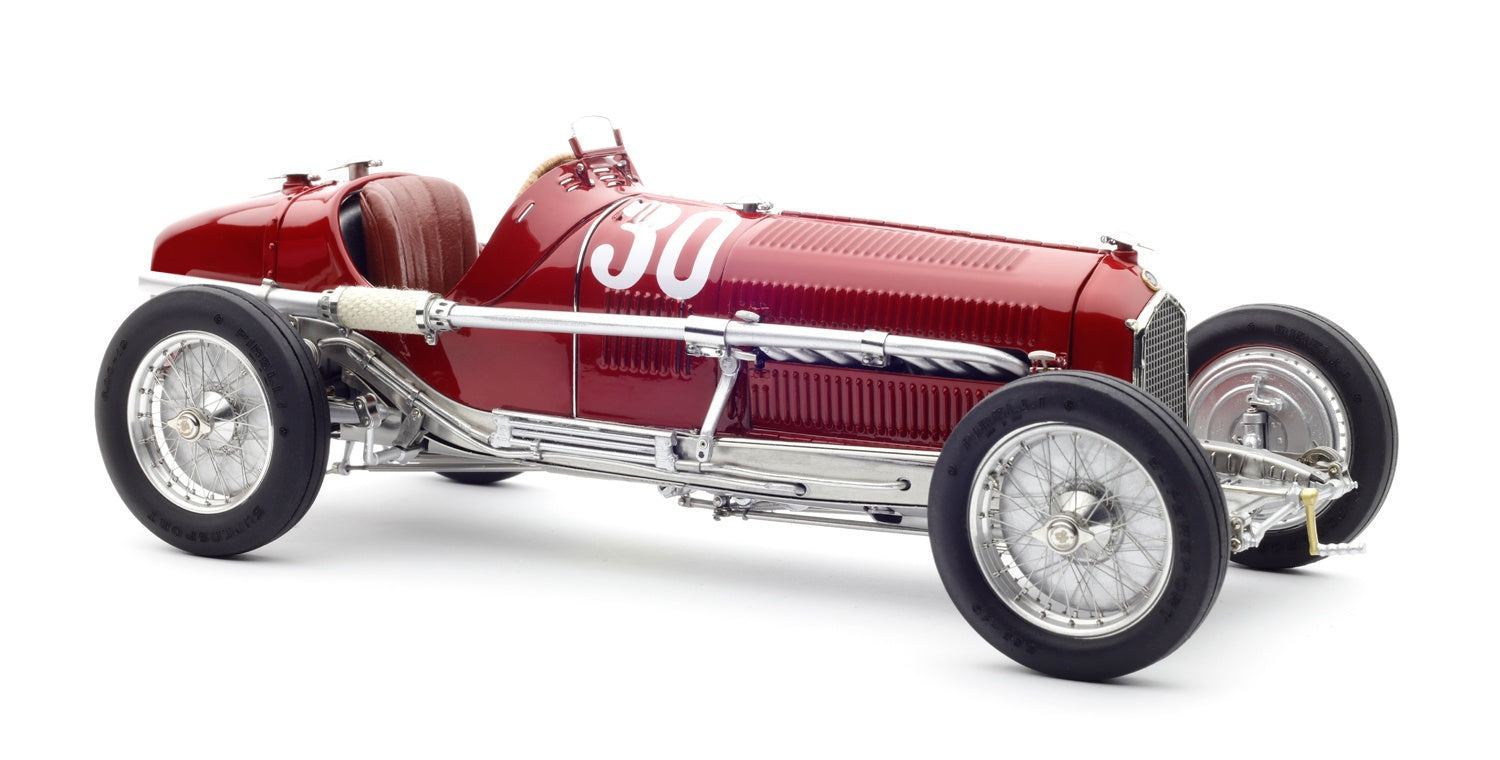
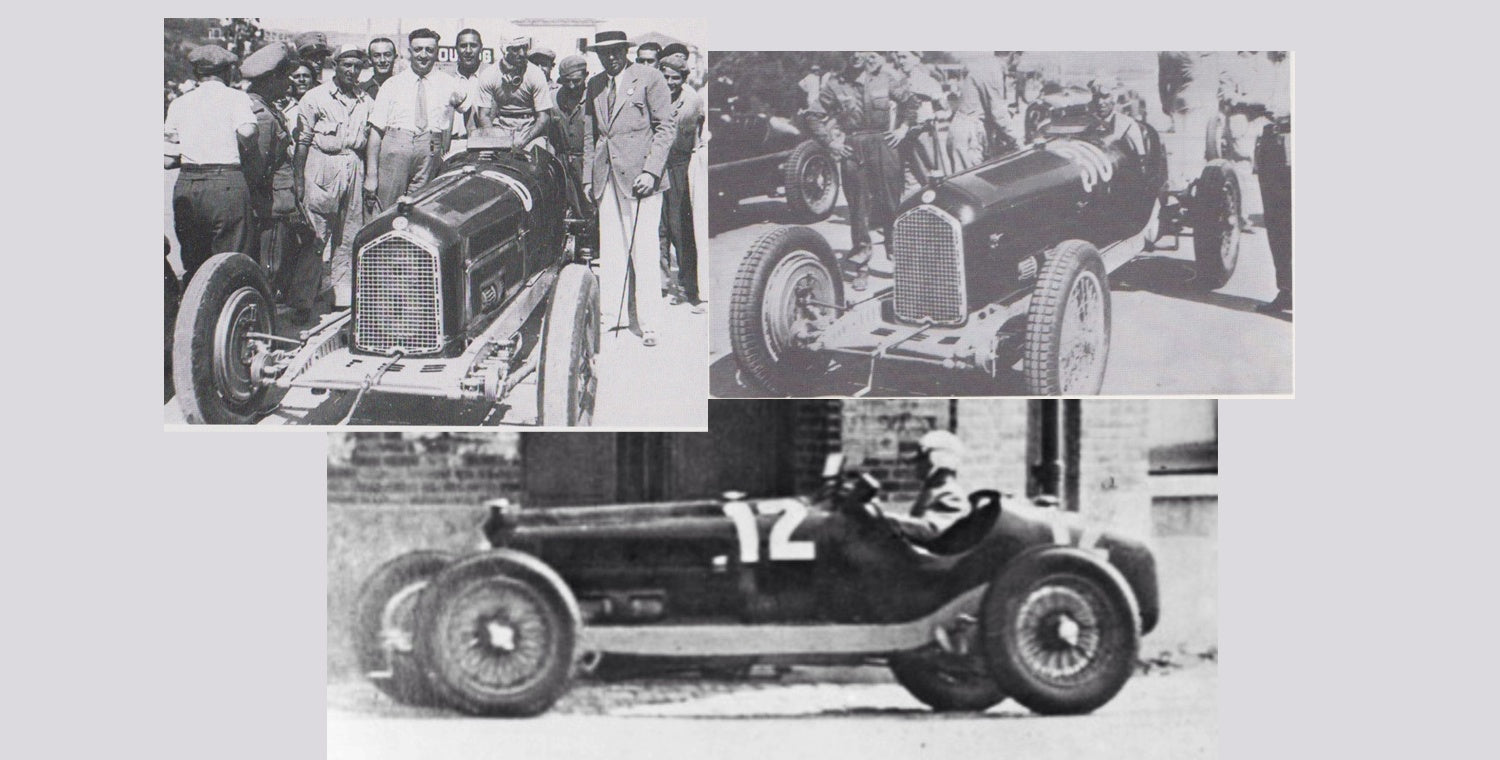
CMC winning set Tazio Nuvolari Alfa-Romeo P3 LE 300

Description
Winner of the 1932 French GP, #12
Winner Coppa Ciano 1932, #30
Winner Coppa Acerbo 1932, #8
including figure and display case
Limited edition of 300 pieces
For this winning set, Tazio Nuvolari, we have selected three different CMC Alfa-Romeo P3 racing cars, which the racing driver Tazio Nuvolari successfully drove in Grand Prix races during the 1932 season.
The model set also comes with a display case and a figurine. The winning set is only available as a complete package.
History of the original vehicle
The Alfa Romeo Tipo B was a single-seater Grand Prix racing car built and fielded by Alfa Romeo between 1932 and 1936. Designed by Vittorio Jano, it was based on the Alfa Romeo 8C models. The P3 was Alfa Romeo's second single-seater, following the Tipo A monoposto of 1931. It adopted some components from the previously highly successful Alfa Romeo P2, leading to the unofficial designation "P3" in the press and among motorsport enthusiasts. Thanks to the numerous victories achieved by drivers such as Tazio Nuvolari and Achille Varzi, it is considered one of the best competition cars ever built.
The chassis, with longitudinal spars and cross members made of pressed steel C-sections, derived from that of the Tipo A, was adapted to the regulations and modified to accommodate the new engine. This version of the engine had a larger displacement of 2654 cc (bore × stroke: 65 × 100 mm) than the turbocharged inline eight-cylinder engine of the 8C 2300 "Monza." It was advanced for its time, with a light-alloy cylinder block and head split into two halves, each with four cylinders. Jano split the block to reduce torsional vibrations of the crankshaft and camshafts by locating all auxiliary drives in the center of the crankshaft: the camshaft drive, the turbocharger drive to the side, and the oil and cooling water pump drive opposite on the exhaust side. The crankcase was a single-piece. The engine featured dry-sump lubrication, two Roots-type superchargers, two Weber carburetors, magneto ignition, and water cooling. It produced 215 hp at 5,600 rpm.
The four-speed gearbox and the multi-plate clutch were locked to the engine.
The wheels were suspended front and rear on rigid axles with semi-elliptic leaf springs and friction shock absorbers, with double rear springs and dampers. The drum brakes were mechanically operated. A new feature of the Type B P3 was the placement of the differential directly behind the manual transmission. From there, power was transferred to the rear wheels via bevel gear pairs with two diagonally arranged shafts. The forward position of the differential reduced the unsprung mass and the load on the rear axle. This was intended to reduce the tendency to oversteer and allowed the driver's seat to be mounted directly on the floor between these shafts, maintaining a low center of gravity.
This 700 kg single-seater with its simple, streamlined body reached 225 km/h.
In the Tipo B/P3's very first race, on June 5, 1932, at the 10th Italian Grand Prix, Tazio Nuvolari won at Monza. The season continued with six more victories for Alfa Romeo, including the most important Grands Prix of the time, namely those of France and Germany (at the Nürburgring). The second driver was the German Rudolf Caracciola. Thanks to these successes, Alfa Romeo and Nuvolari won the International Automobile Championship, which that year was based on the Italian, French, and German Grands Prix.
In 1933, the Alfa Romeo factory team was shut down due to Alfa Romeo's financial problems. Direct participation in competitions was consequently suspended. All Alfa Romeo racing equipment was transferred to Scuderia Ferrari in Modena, which had prepared and fielded the racing cars since 1929. That year, the Tipo B did not participate in the first 25 races and did not compete again until August. It won six of the remaining eleven races, including the Italian and Spanish Grands Prix.
The legend Tazio Nuvolari
The Flying Mantuan
Tazio Nuvolari (1892–1953) was born in Italy. He set 172 racing records, won 64 races, finished second 16 times, and third nine times. [1] Ferdinand Porsche called him "the greatest driver of the past, present, and future." A resident of Mantua, he was called "the flying Mantuan" and was often affectionately addressed as "Nivola."
In 1932, Nuvolari drove an Alfa Romeo P3, winning one major racing event after another. At that time, Enzo Ferrari wasn't yet a car manufacturer, and Alfas were among the fastest racing cars in the world. To understand the old Alfas, you first have to understand the men who drove them, especially Nuvolari.
He was a short, stocky man, around 1.60 meters tall, who only began driving in 1920 at the age of 27. Over the next 30 years, he was pulled from the wreckage of a car or motorcycle 17 times and was able to leave the hospital after each of his accidents. He once won a motorcycle race after mechanics lifted him onto his bike because he was encased in a plaster cast. [2] His doctor said, "You're a dead man if you crash, Nivola." His face bore the scars of countless accidents.
Nuvolari's lucky charm, by the way, was a turtle. It had been given to him in 1932 by the writer Gabriele D'Annunzio as a token of respect, and the dedication "For the fastest man, the slowest animal" was engraved on the back of the gold brooch.
Nuvolari's motto was simple: "Win or tear the car apart." It's remarkable that racing didn't cost him his life, but that he passed away peacefully in his bed. Looking back, racing drivers at that time tended to be manically driven by a single goal, stopping at nothing to achieve it, not even diabolical tampering with the car's technology. A typical example of this was the gruesome death of Alfa factory driver Giuseppe Campari at the 1933 Monza Grand Prix, driving a car without brakes simply to reduce weight!
Nuvolari was arguably the bravest racing driver of all time. For Italy, he became an idol, a demigod, a legend who embodied everything that young Italy aspired to be at that time. He wanted to make the impossible possible, not just once, but always. While Nuvolari danced with death his entire life, he died quite unspectacularly from a stroke that left him partially paralyzed in 1952. He died the following year.
Nuvolari joined the Alfa Romeo factory team in 1932 and embarked on an incredible winning streak in Grand Prix races and all the major racing events of the season. From then on, he was considered one of the greatest drivers, and Alfa Romeo was one of the dominant car manufacturers in the European Motorsport Championship. Driving the legendary single-seater Type B, unofficially known as the P3, he won every race in the series.
CMC replicates Nuvolari's four P3-winning cars from the 1932 season.
Available either as an unlimited edition with the Italian GP starting number 8 (item number M-219) or as a limited-edition three-piece set in memory of Tazio Nuvolari (item number M-229), limited to 300 pieces. The commemorative set honoring Nuvolari consists of three models – the French GP winner with starting number 12, the Coppa Ciano winner with starting number 8, and the Coppa Acerbo winner, also with starting number 8. A display case and a racing driver figurine are included.
Sources:
1. Smith, Sam
2016 “Driving the 1934 Alfa Romeo That Beat the Nazis”. 2016 March
April issue of Road and Track
2. Hilton, Christopher
2003 Nuvolari. Derby, UK: Breedon Books Publishing Co.
3. CMC
Notice
Winner of the 1932 French GP, #12
Winner Coppa Ciano 1932, #30
Winner Coppa Acerbo 1932, #8
including figure and display case
Limited edition of 300 pieces
For this winning set, Tazio Nuvolari, we have selected three different CMC Alfa-Romeo P3 racing cars, which the racing driver Tazio Nuvolari successfully drove in Grand Prix races during the 1932 season.
The model set also comes with a display case and a figurine. The winning set is only available as a complete package.
History of the original vehicle
The Alfa Romeo Tipo B was a single-seater Grand Prix racing car built and fielded by Alfa Romeo between 1932 and 1936. Designed by Vittorio Jano, it was based on the Alfa Romeo 8C models. The P3 was Alfa Romeo's second single-seater, following the Tipo A monoposto of 1931. It adopted some components from the previously highly successful Alfa Romeo P2, leading to the unofficial designation "P3" in the press and among motorsport enthusiasts. Thanks to the numerous victories achieved by drivers such as Tazio Nuvolari and Achille Varzi, it is considered one of the best competition cars ever built.
The chassis, with longitudinal spars and cross members made of pressed steel C-sections, derived from that of the Tipo A, was adapted to the regulations and modified to accommodate the new engine. This version of the engine had a larger displacement of 2654 cc (bore × stroke: 65 × 100 mm) than the turbocharged inline eight-cylinder engine of the 8C 2300 "Monza." It was advanced for its time, with a light-alloy cylinder block and head split into two halves, each with four cylinders. Jano split the block to reduce torsional vibrations of the crankshaft and camshafts by locating all auxiliary drives in the center of the crankshaft: the camshaft drive, the turbocharger drive to the side, and the oil and cooling water pump drive opposite on the exhaust side. The crankcase was a single-piece. The engine featured dry-sump lubrication, two Roots-type superchargers, two Weber carburetors, magneto ignition, and water cooling. It produced 215 hp at 5,600 rpm.
The four-speed gearbox and the multi-plate clutch were locked to the engine.
The wheels were suspended front and rear on rigid axles with semi-elliptic leaf springs and friction shock absorbers, with double rear springs and dampers. The drum brakes were mechanically operated. A new feature of the Type B P3 was the placement of the differential directly behind the manual transmission. From there, power was transferred to the rear wheels via bevel gear pairs with two diagonally arranged shafts. The forward position of the differential reduced the unsprung mass and the load on the rear axle. This was intended to reduce the tendency to oversteer and allowed the driver's seat to be mounted directly on the floor between these shafts, maintaining a low center of gravity.
This 700 kg single-seater with its simple, streamlined body reached 225 km/h.
In the Tipo B/P3's very first race, on June 5, 1932, at the 10th Italian Grand Prix, Tazio Nuvolari won at Monza. The season continued with six more victories for Alfa Romeo, including the most important Grands Prix of the time, namely those of France and Germany (at the Nürburgring). The second driver was the German Rudolf Caracciola. Thanks to these successes, Alfa Romeo and Nuvolari won the International Automobile Championship, which that year was based on the Italian, French, and German Grands Prix.
In 1933, the Alfa Romeo factory team was shut down due to Alfa Romeo's financial problems. Direct participation in competitions was consequently suspended. All Alfa Romeo racing equipment was transferred to Scuderia Ferrari in Modena, which had prepared and fielded the racing cars since 1929. That year, the Tipo B did not participate in the first 25 races and did not compete again until August. It won six of the remaining eleven races, including the Italian and Spanish Grands Prix.
The legend Tazio Nuvolari
The Flying Mantuan
Tazio Nuvolari (1892–1953) was born in Italy. He set 172 racing records, won 64 races, finished second 16 times, and third nine times. [1] Ferdinand Porsche called him "the greatest driver of the past, present, and future." A resident of Mantua, he was called "the flying Mantuan" and was often affectionately addressed as "Nivola."
In 1932, Nuvolari drove an Alfa Romeo P3, winning one major racing event after another. At that time, Enzo Ferrari wasn't yet a car manufacturer, and Alfas were among the fastest racing cars in the world. To understand the old Alfas, you first have to understand the men who drove them, especially Nuvolari.
He was a short, stocky man, around 1.60 meters tall, who only began driving in 1920 at the age of 27. Over the next 30 years, he was pulled from the wreckage of a car or motorcycle 17 times and was able to leave the hospital after each of his accidents. He once won a motorcycle race after mechanics lifted him onto his bike because he was encased in a plaster cast. [2] His doctor said, "You're a dead man if you crash, Nivola." His face bore the scars of countless accidents.
Nuvolari's lucky charm, by the way, was a turtle. It had been given to him in 1932 by the writer Gabriele D'Annunzio as a token of respect, and the dedication "For the fastest man, the slowest animal" was engraved on the back of the gold brooch.
Nuvolari's motto was simple: "Win or tear the car apart." It's remarkable that racing didn't cost him his life, but that he passed away peacefully in his bed. Looking back, racing drivers at that time tended to be manically driven by a single goal, stopping at nothing to achieve it, not even diabolical tampering with the car's technology. A typical example of this was the gruesome death of Alfa factory driver Giuseppe Campari at the 1933 Monza Grand Prix, driving a car without brakes simply to reduce weight!
Nuvolari was arguably the bravest racing driver of all time. For Italy, he became an idol, a demigod, a legend who embodied everything that young Italy aspired to be at that time. He wanted to make the impossible possible, not just once, but always. While Nuvolari danced with death his entire life, he died quite unspectacularly from a stroke that left him partially paralyzed in 1952. He died the following year.
Nuvolari joined the Alfa Romeo factory team in 1932 and embarked on an incredible winning streak in Grand Prix races and all the major racing events of the season. From then on, he was considered one of the greatest drivers, and Alfa Romeo was one of the dominant car manufacturers in the European Motorsport Championship. Driving the legendary single-seater Type B, unofficially known as the P3, he won every race in the series.
CMC replicates Nuvolari's four P3-winning cars from the 1932 season.
Available either as an unlimited edition with the Italian GP starting number 8 (item number M-219) or as a limited-edition three-piece set in memory of Tazio Nuvolari (item number M-229), limited to 300 pieces. The commemorative set honoring Nuvolari consists of three models – the French GP winner with starting number 12, the Coppa Ciano winner with starting number 8, and the Coppa Acerbo winner, also with starting number 8. A display case and a racing driver figurine are included.
Sources:
1. Smith, Sam
2016 “Driving the 1934 Alfa Romeo That Beat the Nazis”. 2016 March
April issue of Road and Track
2. Hilton, Christopher
2003 Nuvolari. Derby, UK: Breedon Books Publishing Co.
3. CMC


